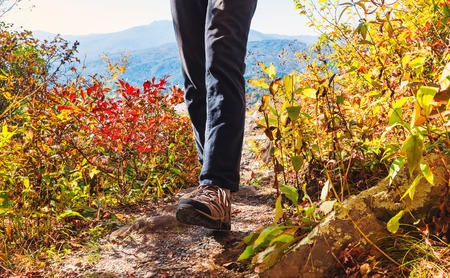Introduction to Mountain Walking in the UK
Mountain walking in the UK holds a special place in the hearts of outdoor enthusiasts, offering an experience that is both accessible and deeply rewarding. Unlike the towering ranges found elsewhere in the world, British mountains are characterised by their rugged beauty, ever-changing weather, and centuries-old paths that weave through striking landscapes. From the wilds of Scotland to the rolling fells of the Lake District and the dramatic peaks of Snowdonia, these walks attract locals and visitors alike. For many Britons, tackling a mountain walk is almost a rite of passage—steeped in tradition, camaraderie, and a deep appreciation for nature’s subtle grandeur. The popularity of these walks continues to grow, as more people seek out opportunities for adventure, personal challenge, and a closer connection with the natural heritage of the UKs national parks.
Essential Gear and Preparation
Heading up the highest peaks within the UK’s national parks isn’t a stroll in the park—being well-prepared is crucial for both safety and enjoyment. The unpredictable British weather, rugged terrain, and remote locations demand careful planning. Here’s what you need to consider before setting out:
Appropriate Kit and Clothing
Having the right equipment can make the difference between a memorable day out and a hazardous ordeal. Layering is key; conditions at altitude can change rapidly, even in summer. Here’s a quick checklist of essential kit:
| Item | Purpose/Notes |
|---|---|
| Waterproof Jacket & Trousers | Vital for protection against rain and wind; look for breathable fabrics. |
| Base Layers (thermal tops & leggings) | Helps regulate body temperature and wicks away sweat. |
| Insulating Mid-Layer (fleece or down) | Keeps you warm when temperatures drop unexpectedly. |
| Sturdy Walking Boots | Ankle support and grippy soles are essential on rocky, uneven paths. |
| Hat & Gloves | Even in summer, summit winds can chill quickly. |
| Map & Compass (and knowledge to use them) | Don’t rely solely on your phone—signal is often patchy in the hills. |
| Rucksack (20-30L) | Big enough for layers, water, snacks, and emergency gear. |
Safety Measures
Your safety should always come first. Before heading out, check the local weather forecast and mountain conditions. Let someone know your planned route and estimated return time—this is standard practice among experienced hillwalkers in the UK. Carry a fully charged mobile phone with emergency contact numbers pre-saved, but don’t count on reliable reception everywhere.
Emergency Essentials
- First aid kit: Include blister plasters, painkillers, and any personal medication.
- Head torch: Conditions can change quickly or you may be delayed—always pack spare batteries.
- Whistle: Invaluable for signalling if you need help.
A Note on Navigation
The UK’s mountains are notorious for low cloud cover and sudden mists that can obscure even well-marked paths. Practise your map-reading skills before tackling larger peaks like Scafell Pike or Ben Nevis. Consider taking an introductory navigation course if you’re new to mountain walking.

3. National Parks and Their Highest Peaks
The United Kingdom is blessed with a variety of national parks, each boasting its own unique landscapes and prominent summits. Among these, the Lake District, Snowdonia, and the Cairngorms stand out as essential destinations for mountain walkers seeking both challenge and natural beauty.
The Lake District
Located in Cumbria, the Lake District National Park is renowned for its picturesque lakes, rugged fells, and quaint villages. The crowning jewel here is Scafell Pike, which, at 978 metres, is not only the park’s highest point but also the tallest peak in England. Walking routes to the summit vary in difficulty, with classic ascents starting from Wasdale Head or Seathwaite. Each path offers a different perspective on the surrounding valleys and tarns.
Snowdonia
Situated in North Wales, Snowdonia National Park is home to the legendary Yr Wyddfa (Snowdon), rising to 1,085 metres. This peak is steeped in Welsh folklore and attracts walkers from across Britain. There are several well-marked routes to the summit, including the popular Llanberis Path and the more challenging Crib Goch ridge. The panoramic views from the top stretch across Anglesey and, on clear days, all the way to Ireland.
The Cairngorms
Covering a vast area of the Scottish Highlands, the Cairngorms National Park offers a wilder experience for seasoned hikers. Ben Macdui stands as its highest point at 1,309 metres and is second only to Ben Nevis in all of Britain. Approaching Ben Macdui typically involves crossing exposed plateaus and tackling unpredictable weather conditions—a true test for any mountain walker.
Other Notable Peaks
While these three parks are perhaps the most iconic, others such as Brecon Beacons (Pen y Fan) and the Peak District (Kinder Scout) offer their own challenges and rewards. Each national park has its own character, shaped by geography and local culture, making every walk a new adventure.
Choosing Your Adventure
Whether you’re aiming for England’s highest point or tackling a Scottish giant, understanding each national park’s unique features helps ensure a safe and memorable experience on Britain’s greatest mountain walks.
4. Classic Routes and Walks
Britain’s national parks boast a wealth of classic mountain walks, each with its own unique character and challenges. Navigating these iconic routes is as much about local know-how as it is about stamina and kit. Here’s a closer look at some of the most celebrated ascents, along with practical advice to help you make the most of your adventure.
Scafell Pike (Lake District National Park)
Standing at 978 metres, Scafell Pike is England’s highest peak. The route from Wasdale Head is the most direct and popular, but for those seeking quieter paths, the Corridor Route from Seathwaite offers dramatic views and a more varied landscape. Weather can turn quickly here, so bring waterproofs and always check the forecast before setting off.
Ben Nevis (Lochaber, Scottish Highlands)
The classic ascent follows the Mountain Track from Glen Nevis, which is well-maintained but relentless in its climb. Local knowledge suggests starting early to avoid crowds and carrying extra layers—the summit can be several degrees colder than the car park below. Those with navigation skills might consider the Carn Mor Dearg Arête for a wilder experience.
Snowdon (Yr Wyddfa, Snowdonia National Park)
Snowdon offers six main paths to its summit. The Llanberis Path is favoured by many first-timers, while the Pyg Track and Miners’ Track provide steeper, more scenic alternatives. Local walkers recommend an early morning start or an evening ascent to catch sunrise or sunset—both magical times on the mountain.
Comparing Classic Routes
| Peak | Main Route | Distance (km) | Ascent (m) | Estimated Time |
|---|---|---|---|---|
| Scafell Pike | Wasdale Head | 10 | 900 | 5-6 hrs |
| Ben Nevis | Mountain Track | 17 | 1350 | 7-9 hrs |
| Snowdon | Llanberis Path | 14.5 | 975 | 6-7 hrs |
Practical Tips & Local Advice
- Always carry an OS map and compass; phone signal can be patchy.
- Packing layers is crucial: even in summer, weather on British peaks is unpredictable.
- If you’re unfamiliar with local terrain, consider joining a guided group or chatting with locals at nearby pubs—they’re often keen to share recent trail conditions.
Tackling these classic UK mountain walks isn’t just about reaching the top—it’s about embracing the landscape, respecting local traditions, and preparing thoroughly for a safe and memorable experience.
5. Respecting the Environment
Understanding the Countryside Code
When tackling the highest peaks in the UKs national parks, walkers play a vital role in preserving these treasured landscapes for future generations. The Countryside Code is at the heart of responsible walking and sets out simple guidelines to follow: respect everyone, protect the environment, and enjoy the outdoors. Always close gates behind you, keep dogs under control, and take litter home. Following marked paths helps prevent erosion and protects delicate plant life unique to Britains mountains.
Responsible Walking Practices
Sticking to established trails is crucial, particularly on well-trodden peaks like Scafell Pike or Snowdon, where foot traffic can quickly damage fragile habitats. Avoid picking wildflowers or disturbing wildlife—remember that nesting birds and rare plants often rely on undisturbed ground. If you encounter livestock, pass quietly and do not feed them. Keeping noise levels down ensures both wildlife and fellow walkers enjoy the tranquillity of the hills.
Leave No Trace Principles
The principle of leave no trace is essential for anyone venturing into Britains mountainous areas. Pack out everything you bring in, including food wrappers and biodegradable waste. If nature calls, move well away from water sources and bury waste responsibly. Even biodegradable items like orange peel can linger for months in upland environments.
Supporting Conservation Efforts
Many UK mountain paths are maintained by local volunteers and charities. Consider supporting these organisations through donations or volunteering your time. Participation in organised clean-up days or path repairs contributes directly to the sustainability of these beloved landscapes. By respecting the environment as outlined above, every walker helps ensure that Britain’s dramatic peaks remain pristine for all who come after.
6. Weather, Navigation, and Safety Tips
Understanding UK Mountain Weather
Weather in the UK’s national parks can be highly changeable and unpredictable, especially at higher altitudes. Even on a seemingly clear day, conditions can shift rapidly, bringing sudden rain, strong winds, or dense fog. Always check the latest Met Office mountain weather forecasts before setting out, and prepare for all eventualities by packing waterproof clothing and extra warm layers. Remember, wind chill on exposed summits can make temperatures feel much colder than forecasted.
Navigation Skills: Map Reading and Route Planning
Effective navigation is crucial in the British hills. Even well-trodden paths can disappear under mist or snow, so never rely solely on smartphone apps or GPS devices—they can fail in remote areas with poor signal or low battery. Carry a detailed OS (Ordnance Survey) map of the area and a reliable compass, and ensure you know how to use them. Before your walk, plan your route thoroughly, noting key waypoints and potential escape routes should the weather deteriorate. Practise using map and compass skills regularly; this is a vital safety net in the UK’s often featureless terrain.
Staying Safe in Unpredictable Conditions
In the UK’s mountains, safety hinges on preparation and sound judgement. Inform someone of your planned route and estimated return time before heading out. Pack essential safety gear including a headtorch, whistle, first aid kit, and emergency food supplies. Be realistic about your abilities—turn back if conditions worsen or if anyone in your group feels unwell. In an emergency, call 999 or 112 and ask for Mountain Rescue. Above all, respect the mountains: they are beautiful but demand caution and respect at all times.


